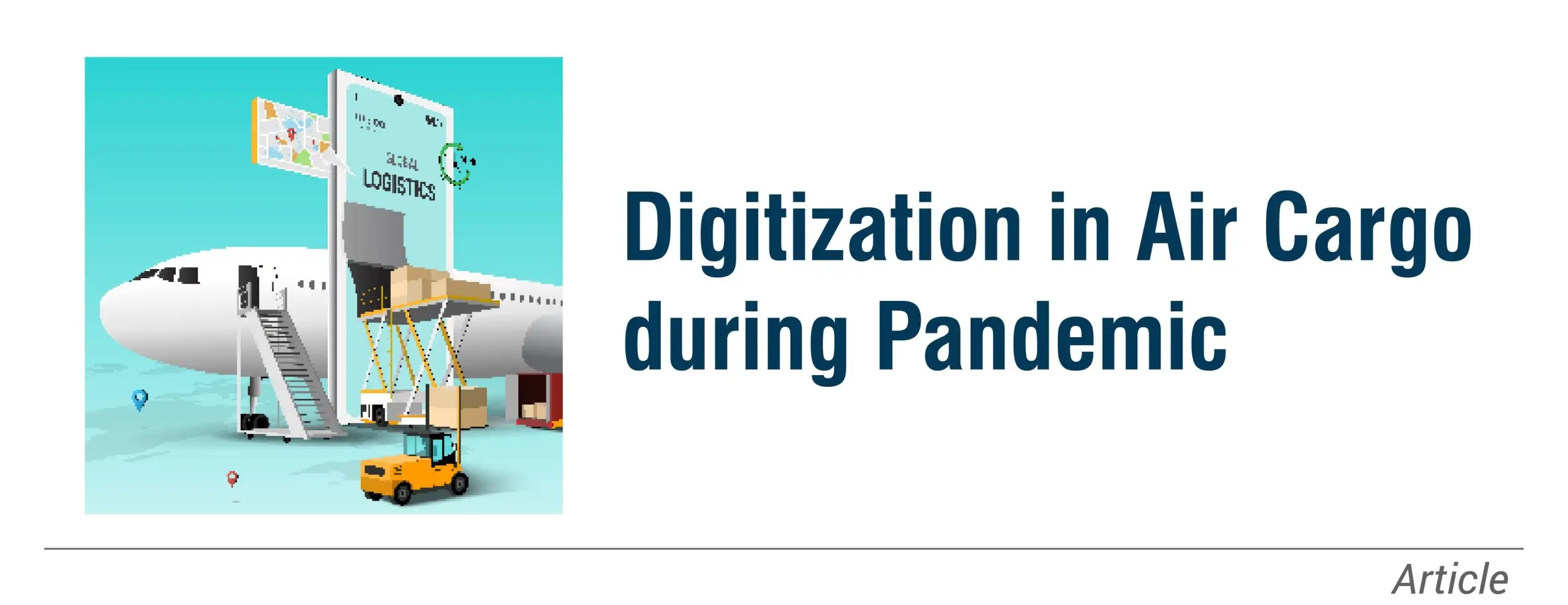
07 Aug Pandemic & digitization in air cargo
Meet Vivek Pandit, our expert in the air cargo sector. He is spearheading community system implementations and understands the needs of the aviation industry. The pandemic has brought the need to simplify and digitize the world of logistics to the forefront. Vivek Pandit shares his views on the changing scenarios and their challenges.
Why is digitization in the air cargo sector become important since the pandemic?
Though historically air freight industry has shown less interest in moving from traditional working patterns, when forced to, the air cargo industry can change more easily than its thought. If equated with the passenger side, the impact on the air freight business has been relatively much less in the aviation sector. The relentless growth of e-commerce during the pandemic has accelerated several emerging trends, including supply chain digitization, that will transform how the entire cargo segment does business. The imbalance between demand and capacity led to higher yields and revenue. Despite the vaccine release globally, its rollout program has been very uneven, and there are significant chances of further outbreaks. Meanwhile, IATA predicts the global air cargo industry won’t return to pre-COVID levels until 2024. From the airlines to the air freight forwarders, need to turn more amalgamated to operate like the integrators. But attempts at coordinating with different stakeholders have been at an annoyingly slow pace.
Hence, failing to make a significant change with disputes over who should bear the investment cost. Digitization demonstrates it is possible to distribute the cost of implementing such a project, as long as airports act as a neutral hub for the competing companies willing to connect to the platform. Supplementary benefits have also emerged. Virus transmission on paper documents is four to five days. Being forced to find an electronic solution to prevent transmission has accelerated the adoption of the IATA e-air waybill initiative leading to the precise effect of reducing delays in deliveries where truckers would line up to hand over physical documents. Moreover, track and trace have significantly improved as well.
Recently dnata has partnered with Kale Logistics Solutions to optimise its operations. How will this partnership change cargo operations for dnata?
dnata launched CALOGI as a game-changer e-commerce platform to cater to the freight market in Dubai, a highly comprehensive and integrated, cost-effective trading platform. Predominantly built for small-to-medium enterprises (SMEs), CALOGI enabled the entire cargo community to trade in a seamlessly paper-free environment. dnata next-generation community platform will connect partners with their cargo customers and regulatory bodies on one platform, sharing real-time information among all users. Customers integrate with the platform into existing workflows through APIs (application programming interface) and take advantage of all innovative functions while interfacing with their system.
dnata has always believed in investing in cutting-edge technologies to deliver best-in-class services for its customers. With changing demands and markets, dnata has revisited all of its processes and support functions to streamline and simplify services, providing the highest level of accuracy and transparency to customers at all stations.
We at Kale Logistics Solutions are extremely proud to be associated with dnata in creating the next-generation community e-commerce platform in Dubai. dnata and Dubai are setting a significant benchmark for the logistics industry. We are confident that with our proven platform and dnata’s vision and experience, the Dubai cargo community will immensely gain due to this platform.
This cooperation will see both companies take dnata’s existing platform, CALOGI, to the next level providing future-proof, forward-looking, best-in-class, one-stop services, including appointment and customs services management, to customers over advanced digital solutions. What is unique with the new system is the air-sea logistics integration, where Dubai will see a common platform that will connect both air and ocean logistics.
Usually, 40% of cargo moves between sea and air. With the sea-air corridor, the entire supply chain will be more coordinated with complete transparency. This new system will act as a single window, where regulatory bodies, dnata, airlines and other supply chain actors can transact and share information and form a world where cross-border trade is simple, fast and cost-effective, creating a global network of airports.
dnata and Dubai have always set a significant benchmark for the logistics industry. What can the other airports learn from them?
Dubai has always been the frontrunner for development. The Emirates today is the frontrunner at turning into a business hub and the future economy global centre, and a magnet for the brightest and most innovative minds who want to explore the challenges of the future and convert them into sustainable development opportunities.
This collaboration will bring about various strategic advantages like establishing a digital trade corridor between Dubai and other airports globally, run on Kale’s platforms. Therefore, Dubai can have a global air network, which will be the industry first.
Dubai is creating digital infrastructure to connect the entire world. dnata plans to replicate the excellence created in Dubai at other airports. The new platform promises to connect partners with customers and authorities in one place, sharing information in real-time among all users.
Customers will integrate the platform into existing workflows through APIs and take advantage of its functions while interfacing with their own systems. The platform will also help customers simplify existing processes quickly and effectively without investing in multiple systems.
dnata has indeed provided various insights on how to improve and elevate the logistics industry. Numerous global airports are inspired and have taken a cue from this tremendous growth opportunity. They are trying to replicate similar models in their respective regions.
